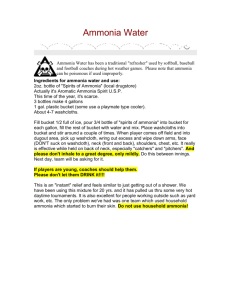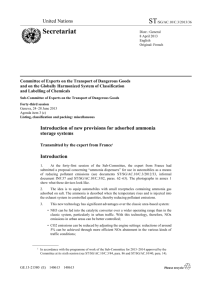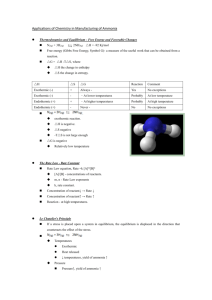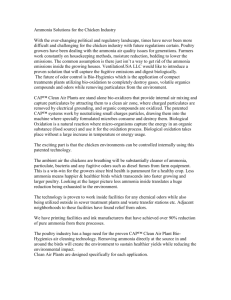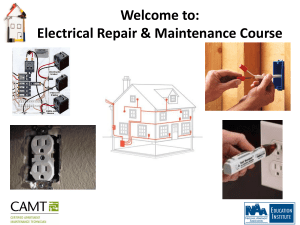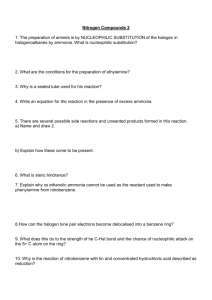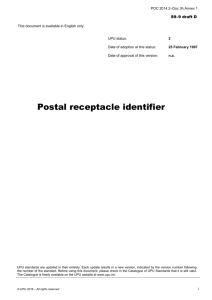1324652
advertisement
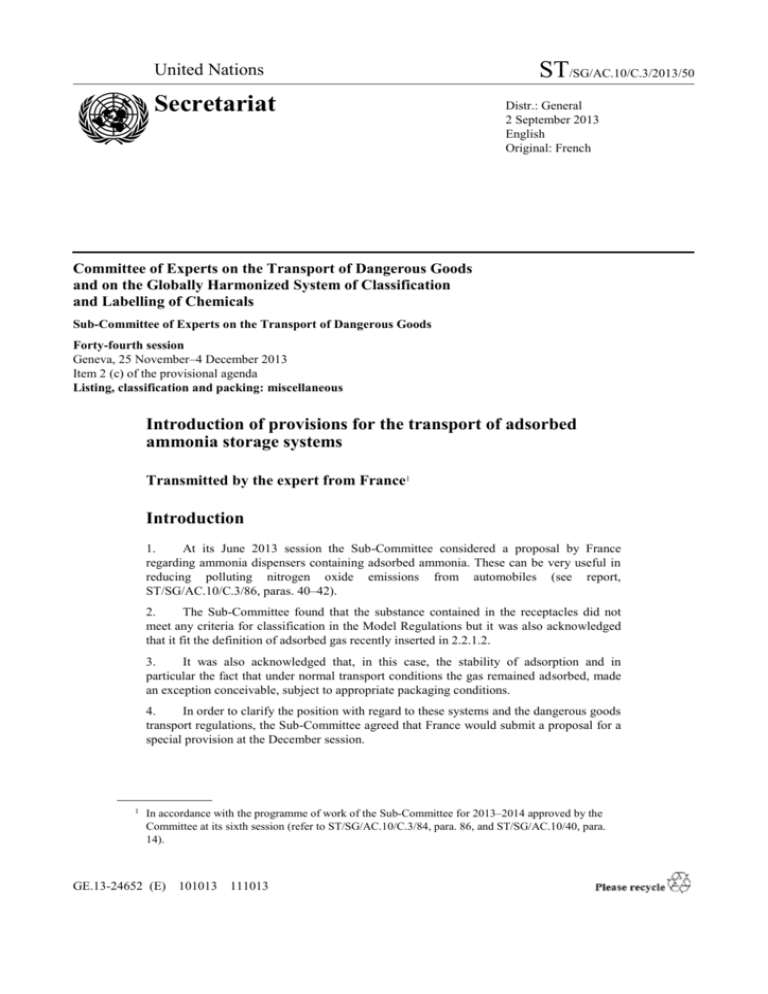
United Nations Secretariat ST/SG/AC.10/C.3/2013/50 Distr.: General 2 September 2013 English Original: French Committee of Experts on the Transport of Dangerous Goods and on the Globally Harmonized System of Classification and Labelling of Chemicals Sub-Committee of Experts on the Transport of Dangerous Goods Forty-fourth session Geneva, 25 November–4 December 2013 Item 2 (c) of the provisional agenda Listing, classification and packing: miscellaneous Introduction of provisions for the transport of adsorbed ammonia storage systems Transmitted by the expert from France1 Introduction 1. At its June 2013 session the Sub-Committee considered a proposal by France regarding ammonia dispensers containing adsorbed ammonia. These can be very useful in reducing polluting nitrogen oxide emissions from automobiles (see report, ST/SG/AC.10/C.3/86, paras. 40–42). 2. The Sub-Committee found that the substance contained in the receptacles did not meet any criteria for classification in the Model Regulations but it was also acknowledged that it fit the definition of adsorbed gas recently inserted in 2.2.1.2. 3. It was also acknowledged that, in this case, the stability of adsorption and in particular the fact that under normal transport conditions the gas remained adsorbed, made an exception conceivable, subject to appropriate packaging conditions. 4. In order to clarify the position with regard to these systems and the dangerous goods transport regulations, the Sub-Committee agreed that France would submit a proposal for a special provision at the December session. 1 In accordance with the programme of work of the Sub-Committee for 2013–2014 approved by the Committee at its sixth session (refer to ST/SG/AC.10/C.3/84, para. 86, and ST/SG/AC.10/40, para. 14). GE.13-24652 (E) 101013 111013 ST/SG/AC.10/C.3/2013/50 5. In accordance with the decisions taken at the last session, the proposed special provision: (a) Defines the properties of the adsorbent and the solidity of the bond based on the temperature/pressure ratio in the receptacle; (b) Sets a quantity limit. This allows for a cautious approach initially. The limit corresponds to current industry needs. For reference, 7 kg of ammonia plus the adsorbent take up around 14 litres at a pressure of 0.6 bar at 20° C and represent 9.9 m3 of ammonia gas at 20° C. By comparison, 7 kg of liquid ammonia would fill a 10.1-litre bottle at a pressure of 8.6 bar; (c) Defines the performance requirements of the receptacles containing adsorbed ammonia, adjusted for the adsorption properties previously defined. In this way safety is assured even in accident conditions such as fire engulfment or high temperatures. 6. Under these conditions, as the Sub-Committee wished, it is reasonable to exempt transport of these systems from the other provisions of the Model Regulations. 7. In order to avoid errors and for user-friendliness, it is proposed that this special provision should be added for UN Nos. 1005 and 3512. 8. The Sub-Committee is invited to take a decision on the adoption of the following proposals. Proposals 9. Proposal 1: add a new special provision xxx in chapter 3.3 as follows: “xxx Anhydrous ammonia adsorbed on a solid contained in ammonia dispensing systems or receptacles intended to form part of such systems shall not be subject to the other provisions of these Regulations if the following conditions are observed: (a) The adsorption presents the following solidity properties: (i) The pressure at an even temperature of 20° C in the receptacle is less than 0.6 bar; (ii) The pressure at an even temperature of 35° C in the receptacle is less than 1 bar; (iii) The pressure at an even temperature of 100° C in the receptacle is less than 15 bar. (b) The support substance should not have dangerous properties listed in Classes 1 to 8; (c) (d) conditions: (i) The maximum contents of a receptacle shall be 7 kg of ammonia; and Receptacles containing adsorbed ammonia must meet the following Receptacles shall be made of stainless steel; (ii) Receptacles and their means of closure shall be hermetically sealed and able to contain the generated ammonia; (iii) Each receptacle shall be able to withstand the pressure generated at 85° C with deformation no greater than 0.1%; 2 GE.13-24652 ST/SG/AC.10/C.3/2013/50 (iv) Each receptacle shall be fitted with a device that allows for gas evacuation once pressure exceeds 15 bar without violent rupture, explosion or projection; and (v) Each receptacle shall be able to withstand pressure of 20 bar without leakage when the pressure relief device is deactivated. When carried in an ammonia dispenser, the receptacles shall be connected to the dispenser in such a way that the assembly is guaranteed to have the same strength as a single receptacle. The properties of mechanical strength mentioned in this special provision shall be tested using a prototype of a receptacle and/or dispenser filled to nominal capacity, by increasing the temperature until the specified pressures are reached. The test results shall be documented, shall be traceable and shall be communicated to the relevant authorities upon request.” 10. Proposal 2: add the new special provision xxx in Column (6) of the list of dangerous goods in chapter 3.2 for UN Nos. 1005 AMMONIA, ANHYDROUS and 3512 ADSORBED GAS, TOXIC N.O.S. GE.13-24652 3



